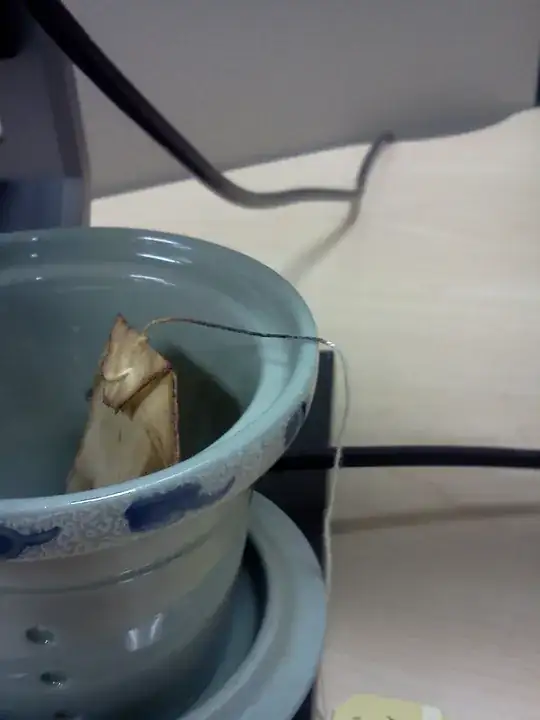I regularly drink tea at work and I often reuse the tea bags (yes I know I'm a cheapskate). Yesterday afternoon I used a tea bag once and kept it in the cup in case I wanted another cup before I left. As it turned out, I didn't and the tea bag was still there when I came into the office this morning with a very curious pattern of discoloration.
I believe I understand most of the process; over night, the bag was drying out with the upper portion drying most quickly and the liquid from the leaves wicking up the bag and into the string. As the process continued, progressively more suspended solids were carried up the system and deposited near the top where the rate of drying was most rapid. As a result, there is a dark line of tea deposits around the upper edge of the bag and on the string. Oddly, though, the deposits very abruptly stop at the edge of the cup where the string drops to the dangling tag. Close examination reveals that this discoloration stops not exactly at the edge of the cup (as might be expected if contact with the cup were the cause) but slightly beyond it where the string descends. The only reason I can think of as to why this should be so is that the wicking action responsible for the discoloration of part of the string, stopped at that point. But why should this be? After all, a siphon ONLY works when the receiving end is below the apex. Am I wrong in my assumptions? Or does anyone know:
Why does a string not wick down?
